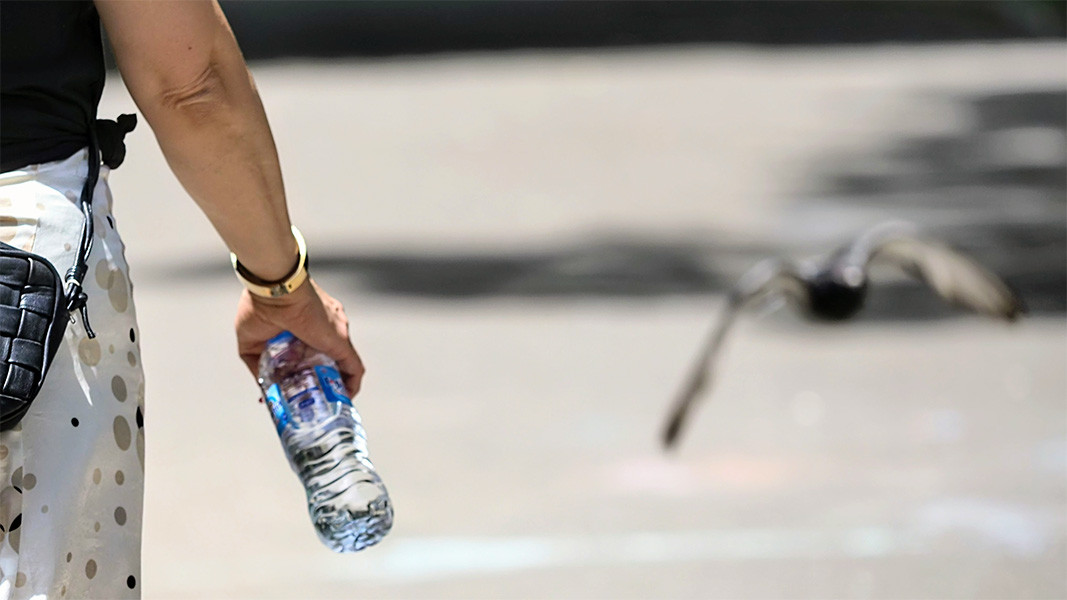Plan And Plant: Your Guide To A Thriving Living Fence

Table of Contents
Planning Your Living Fence
Before you even pick up a shovel, careful planning is key to a successful living fence. This section will cover the essential steps to ensure your fence thrives.
Choosing the Right Plants
Selecting the right plants is crucial for a healthy and visually appealing living fence. Consider these factors:
- Climate: Choose plants hardy to your specific climate zone, considering average temperatures, rainfall, and potential extreme weather events.
- Soil Type: Test your soil's pH and drainage. Amend the soil as necessary to create a suitable environment for your chosen plants. Poor drainage can lead to root rot, so proper soil preparation is vital for a thriving living fence.
- Sunlight Exposure: Determine how much sunlight your fence location receives throughout the day. Some plants thrive in full sun, while others prefer shade.
Popular choices for living fences include:
- Leyland Cypress: A fast-growing evergreen known for its dense foliage and tall height. Ideal for quick privacy screens.
- Arborvitae: Another fast-growing evergreen, offering excellent screening and a variety of sizes and colors.
- Privet: A versatile option, available in both evergreen and deciduous varieties, offering dense growth and easy maintenance.
- Holly: Offers beautiful berries and strong, dense growth, providing both visual interest and a formidable barrier.
Consider evergreen vs. deciduous options based on your needs. Evergreens provide year-round privacy and visual interest, while deciduous plants offer seasonal changes in color and texture.
Designing Your Fence Layout
The design of your living fence is where you can really let your creativity shine. Consider:
- Desired Height and Width: Determine how tall and wide you want your fence to be. This will influence your plant choices and spacing.
- Plant Spacing: Proper spacing is critical for optimal growth and density. Follow recommended spacing guidelines for your chosen plants, typically ranging from 1 to 3 feet apart.
- Design Elements: Incorporate curves, staggered heights, or different plant varieties for a visually appealing and unique living fence.
- Gate Placement: Plan for gate access if needed, ensuring adequate space for opening and closing.
Visual aids like sketches or even digital landscape design software can be incredibly helpful in visualizing the layout before you start planting.
Preparing the Site
Before planting, thorough site preparation is essential:
- Clear the Area: Remove any existing vegetation, rocks, debris, and other obstacles.
- Soil Testing: Conduct a soil test to determine the pH level and nutrient content. Amend the soil with compost, peat moss, or other organic matter to improve drainage and fertility. This is vital for establishing a strong root system in your living fence.
- Drainage: Ensure the area has good drainage to prevent waterlogging. If drainage is poor, consider adding drainage solutions like gravel or amending the soil with materials that enhance drainage.
- Ground Preparation: Till the soil to a depth of 12-18 inches to create a loose, workable planting bed. This helps the roots to penetrate easily and establish themselves.
Planting Your Living Fence
With planning complete, it's time to plant your living fence!
Planting Techniques
Follow these steps for successful planting:
- Dig Holes: Dig holes slightly larger than the root ball of each plant.
- Planting Depth: Plant the seedlings or saplings at the same depth they were growing in their containers.
- Backfill: Gently backfill the holes with soil, ensuring no air pockets are left around the roots.
- Water Thoroughly: Water deeply after planting to settle the soil and promote root establishment.
- Mulching: Apply a layer of mulch around the base of each plant to retain moisture, suppress weeds, and regulate soil temperature.
Visual aids, such as videos or illustrated guides, can be incredibly helpful in mastering the proper planting techniques.
Choosing the Right Planting Time
The best time to plant a living fence is during the dormant season (fall or early spring) in most climates. This allows the plants to establish strong root systems before the heat of summer or the cold of winter. Planting in spring allows for the entire growing season for establishment, while fall planting allows roots to develop before winter dormancy. Avoid planting during extreme heat or frost.
Ongoing Care and Maintenance
A little care goes a long way in maintaining a thriving living fence.
- Watering: Water regularly, especially during the first year, ensuring the soil remains consistently moist. Deep watering is preferable to frequent shallow watering.
- Pruning: Regular pruning is essential to maintain the shape, density, and overall health of your living fence. Pruning also encourages bushier growth.
- Fertilizing: Feed your living fence annually with a balanced fertilizer to promote healthy growth.
- Pest and Disease Control: Inspect your plants regularly for signs of pests or diseases and address any issues promptly.
Conclusion
Creating a thriving living fence involves careful planning, selecting the right plants, proper planting techniques, and ongoing care. By following the steps outlined in this guide, you can enjoy the many benefits of a living fence: increased privacy, noise reduction, enhanced curb appeal, and a welcoming habitat for wildlife. Ready to create a beautiful and functional living fence? Start planning your project today and enjoy the many rewards of this natural boundary! For more information on specific plant varieties and detailed care instructions, visit [link to relevant resource].

Featured Posts
-
 Marine Le Pen Paris Rally Speech On Conviction Verdict
May 29, 2025
Marine Le Pen Paris Rally Speech On Conviction Verdict
May 29, 2025 -
 Estimating Bryan Cranstons 2025 Net Worth Income Sources And Projections
May 29, 2025
Estimating Bryan Cranstons 2025 Net Worth Income Sources And Projections
May 29, 2025 -
 Five Teenagers Arrested In Gay Bashing Of 16 Year Old
May 29, 2025
Five Teenagers Arrested In Gay Bashing Of 16 Year Old
May 29, 2025 -
 Rsalt Alshykh Fysl Alhmwd Mn Jw 24 Bmnasbt Eyd Astqlal Alardn
May 29, 2025
Rsalt Alshykh Fysl Alhmwd Mn Jw 24 Bmnasbt Eyd Astqlal Alardn
May 29, 2025 -
 Grandma Reveals The Cute Nickname She Gave Morgan Wallen
May 29, 2025
Grandma Reveals The Cute Nickname She Gave Morgan Wallen
May 29, 2025
Latest Posts
-
 Ekstremni Goreschini Prez 2024 G Poveche Ot Polovinata Ot Sveta E Zasegnato
May 30, 2025
Ekstremni Goreschini Prez 2024 G Poveche Ot Polovinata Ot Sveta E Zasegnato
May 30, 2025 -
 Sustainable Urban Development In India The Case For Super Cool Materials
May 30, 2025
Sustainable Urban Development In India The Case For Super Cool Materials
May 30, 2025 -
 Izrail Ekstrennoe Preduprezhdenie O Bezopasnosti Ostavaytes Doma
May 30, 2025
Izrail Ekstrennoe Preduprezhdenie O Bezopasnosti Ostavaytes Doma
May 30, 2025 -
 Silnaya Nepogoda V Izraile Preduprezhdenie I Rekomendatsii Mada
May 30, 2025
Silnaya Nepogoda V Izraile Preduprezhdenie I Rekomendatsii Mada
May 30, 2025 -
 Mada Ekstrennoe Preduprezhdenie O Pogode V Izraile Zhara Kholod I Shtorm
May 30, 2025
Mada Ekstrennoe Preduprezhdenie O Pogode V Izraile Zhara Kholod I Shtorm
May 30, 2025
